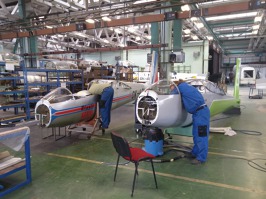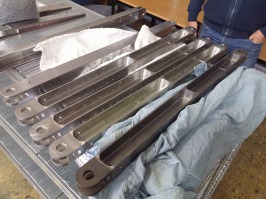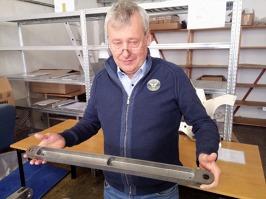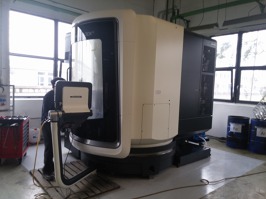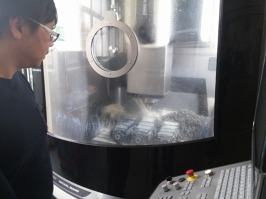How do you rebuild Blanik L-13? Come see with us!
6.11.2017
Follow Flying Revue to the backstage of Czech gliders’ manufacturers Heavy hearts of Blanik glider enthusiasts could finally cheer up a year ago - Blanik Limited was awarded an EASA certificate that it can carry out rebuilding of the grounded gliders. So, we went behind the scenes and visited the production to see what needs to be done and what does your Blanik must go through before it can fly again, and its lifespan can extend up to 6,000 hours.
At first glance, it's easy - you change the sixth bulkhead, fit the reinforced wing hinge and your Blanik can fly again. Is it really that simple?
"Not quite," says Vaclav Krizek, director of Blanik Aircraft CZ, Ltd. (subsidiary Blanik Ltd.), as he takes us through the production halls of the company in Letnany, where the upgrade of the Blanik gliders is carried out. "It is mostly about reinforcing the lower wing hinges, but before you can do that you have to take almost the whole plane apart, replace all the damaged parts and then put everything together again,” he explains. You can find individual rebuilding stages of the popular gliders in the video above. More details can be seen in the photo gallery.
Phase 1: Inspection and production of the wing hinge
Reinforced lower hinge of the wing is the main part, and it must be re-manufactured. It is made of monoblock material and produced on new CNC machines; production of one piece takes about three hours. When the hinge is finished and checked, whitesmiths then install it to the appropriate position. However, the installation of the hinge is preceded by a relatively long series of steps.
"When the owner brings his glider for the upgrade, we first must go through the documentation and make . A number of hidden defects can be found during this first step, which is necessary to remove during the upgrade.
Jak se dělá.... přestavba L-13 Blaník. Video: Flying Revue
Phase 2: Disassembly
The next step is disassembly; our technicians gradually remove instruments, equipment, chassis, and steering. Then the fuselage is ready to be dismantled into three parts. Then the sixth bulkhead get the new hinge, and the fuselage is put together again.
Phase 3: Whitesmith
In the meantime, the wings are taken to another workshop for the whitesmiths to work on them. They remove the lower wings' skin to accommodate reinforcement, check the lower hinge, and remove it. Next step is an inspection of the lower flange.
"After the technicians evaluate that the flange is in a usable condition, reinforcement is performed by replacing the old parts with new ones and screwing it all back together. The holes need to be 100% circular so they have to be enlarged and checked for cracks. The flange is also checked for cracks," continues Mr. Krizek. If the flange is defective, it must be replaced with a new one.
Phases 4 and 5: Final assembly and engagement
When the repairs of the wings and fuselage are completed, and the glider is freshly painted (if required by the customer), the glider moves to the final assembly where our technicians reinstall all the equipment, including the controls, and they take the glider for a test flight. If everything is as it should be, the glider can return to his owner and start soaring in the skies again.
"And, that’s it," laughs Vaclav Krizek as he shows us a nearly finished glider for a Russian customer. "Reinforcement and all the rebuilding means extending the life of the glider up to 6,000 hours," Vaclav Krizek finishes describing the various stages of the upgrade of Blanik gliders.
Upgrade of the gliders is also popular in the USA
Upgrade of the gliders is in high demand. Technicians at Letnany can accomodate about eight orders at one time which brings their annual count to about 40 Blanik L-13 gliders.
Orders are coming from the USA, too. „There are 190 Blanik gliders in the USA, and our partners are pressing us to start the rebuilding process overseas as well. But first, all the documents must be completed, and - most importantly – technicians have to be properly trained,“ says Krizek. In addition, some of the gliders have undergone a number of modifications, and so various problems may occur during the repairs. „We know how to fix those so we need to train the technicians properly, " explains Vaclav Krizek.
Jan Dvorak
EUROPEAN VFR GUIDE
VFR Communication
SkyDemon:
Prague Airport live:
